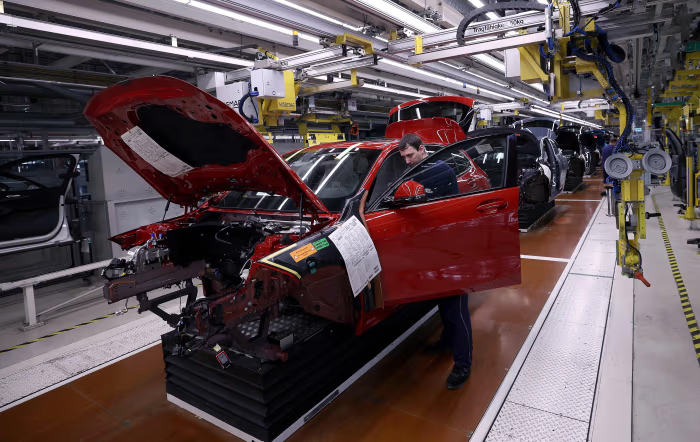The auto and transport market is moving fast in 2025. From electric vehicle (EV) expansion to global shipping delays and the rise of smart logistics, major changes are shaping how the world moves. In this roundup, we look at the key developments in the automotive industry and transport sector that businesses, investors, and consumers should watch closely.
EVs Continue to Disrupt the Auto and Transport Market
Electric vehicles are no longer a niche segment. In July 2025, the EV market hit new milestones across Europe, the U.S., and Asia. According to BloombergNEF, EVs now account for nearly 30% of global car sales, up from 14% just two years ago.
Key Drivers of EV Growth
- Government incentives: Many countries are offering tax credits or subsidies for EV purchases.
- Rising fuel prices: High gasoline and diesel prices are pushing consumers toward electric alternatives.
- Improved infrastructure: More public charging stations and faster chargers are being installed in urban and rural areas alike.
Top Performers in July 2025
- Tesla saw a 12% rise in global deliveries due to strong demand for its affordable Model 2.
- BYD, China’s largest EV manufacturer, expanded into Latin America and Africa.
- Volkswagen launched its new EV SUV lineup in Europe, emphasizing range and design.
With stricter emissions regulations and urban low-emission zones expanding globally, the auto and transport market will continue to lean heavily on electric solutions.
Supply Chain Pressures and Shipping Trends
The global transport system is still recovering from disruptions caused by the post-pandemic backlog, geopolitical conflicts, and extreme weather events.
Major Shipping Updates in July 2025
- Panama Canal delays continued due to prolonged drought, affecting container ship traffic between Asia and the Americas.
- Red Sea tensions led to rerouting of vessels around the Cape of Good Hope, adding 10–14 days of travel time.
- Air cargo rates increased by 8% YoY as shippers sought faster delivery options amid port congestion.
Logistics Impact
- Just-in-time (JIT) inventory models are under pressure, with many companies moving toward just-in-case (JIC) strategies.
- Retailers and manufacturers are investing in localized warehouses and nearshoring to minimize long-distance dependencies.
These changes are forcing companies to rethink how they manage risk and efficiency in global transportation.
Smart Logistics and AI-Powered Transport Systems
As part of the larger digital transformation, the transport industry is investing in artificial intelligence (AI), machine learning (ML), and Internet of Things (IoT) to improve performance and reduce costs.

How AI is Transforming Transport
- Predictive maintenance: Fleet operators use AI to anticipate breakdowns before they happen, reducing downtime.
- Route optimization: Delivery firms are saving time and fuel by using real-time traffic and weather data to plot better routes.
- Autonomous trucks: Trials are expanding in the U.S. and Germany, especially for long-haul freight.
In July 2025, Amazon Logistics unveiled its AI-integrated fleet dashboard, offering real-time driver insights, vehicle health reports, and sustainability tracking.
This wave of innovation is helping businesses reduce operating costs, improve delivery times, and cut emissions.
Auto Sales Performance by Region
While EVs are growing rapidly, overall auto and transport market performance varies by region due to inflation, interest rates, and consumer confidence.
North America
- U.S. auto sales dipped 3.5% in Q2 due to high loan interest rates.
- EV adoption surged in California and Texas, driven by new state-level tax incentives.
- Canada’s used car market grew by 6% as consumers delayed new vehicle purchases.
Europe
- Germany and France reported stable car sales, supported by robust EV adoption and better public transit.
- UK sales dipped due to lingering inflation concerns and delayed imports.
Asia-Pacific
- China led global auto production, especially in the EV segment.
- India’s car market hit record highs, with demand strong in both metro and rural areas.
- Japan is focusing on hybrid growth, with Toyota’s new models dominating sales charts.
These shifts show how different regions are adapting to economic, political, and technological changes.
Fuel Prices and Alternative Energy
Fuel costs remain a hot topic across the transport sector. In July 2025:
- Brent crude hovered around $95/barrel, up 6% from last quarter.
- Diesel prices rose by 4.2% globally, pushing logistics costs higher.
- Biofuels and hydrogen adoption is growing in aviation and maritime shipping.
Many transport companies are investing in alternative fuels to meet sustainability goals and reduce dependency on oil:
- Maersk launched its first methanol-fueled container ship.
- Delta Airlines committed to using 20% sustainable aviation fuel (SAF) by 2030.
- Shell announced plans to build new hydrogen refueling stations for heavy trucks in Europe and the U.S.
Sustainable fuel adoption will play a crucial role in decarbonizing the auto and transport market over the next decade.
Infrastructure Developments in Transport
Transport infrastructure is evolving to support modern needs.
Road and Rail
- India opened two new expressways under its Bharat Mala project.
- Germany approved €10 billion to modernize its rail network, aiming to reduce road traffic.
- California announced an EV-only lane pilot on I-5 between LA and San Diego.
Ports and Airports
- Singapore’s Tuas Mega Port officially started Phase 2 operations, with AI-based berth management.
- Atlanta Airport added automated baggage handling systems, increasing efficiency by 15%.
Smart infrastructure is now just as important as smart vehicles in the modern transport ecosystem.
Mergers, Acquisitions, and Partnerships
Corporate activity in the auto and transport market has been strong, signaling confidence in future growth.
Recent Deals
- Ford and Rivian announced a strategic partnership to co-develop EV pickup trucks.
- Uber Freight acquired a European logistics startup to expand operations.
- Volvo Group merged its commercial vehicle unit with a Japanese tech firm to develop autonomous solutions.
These partnerships are driving innovation, scale, and diversification in the sector.
Key Challenges Facing the Market
Despite optimism, the auto and transport market faces some serious challenges:
- Raw material shortages (especially lithium, cobalt, and chips).
- Labour strikes across manufacturing and delivery sectors in Europe and the U.S.
- Cybersecurity threats, as more vehicles and transport systems go digital.
- Climate-related disruptions, including floods, heatwaves, and wildfires affecting infrastructure and deliveries.
Addressing these issues requires long-term planning, international cooperation, and major investments in both resilience and sustainability.
Outlook for the Rest of 2025
Looking ahead, here are the top trends to watch:
- EV prices may drop as battery costs decline and production scales up.
- AI adoption will grow in fleet management, warehousing, and delivery.
- Decentralized supply chains will reduce reliance on Asia-centric sourcing.
- Sustainability targets will drive investments in green logistics.
- Mobility-as-a-Service (MaaS) models will expand in urban centers, offering subscription-based transport.
The second half of 2025 promises innovation, investment, and transformation across the auto and transport landscape.
Final Thoughts
The auto and transport market is undergoing a revolution. Whether it’s electric cars on city roads, AI in logistics, or sustainable shipping across oceans, the sector is heading toward a smarter, greener future.
For businesses, staying ahead means adapting to new tech, diversifying supply chains, and keeping sustainability at the core. For consumers, expect more choices, faster deliveries, and a cleaner planet.
Read Next – Shein Fined for Misleading Discounts by French Regulators





